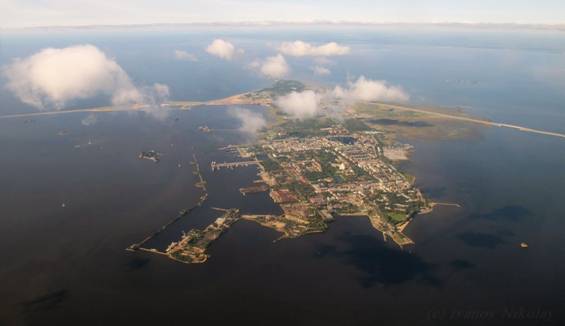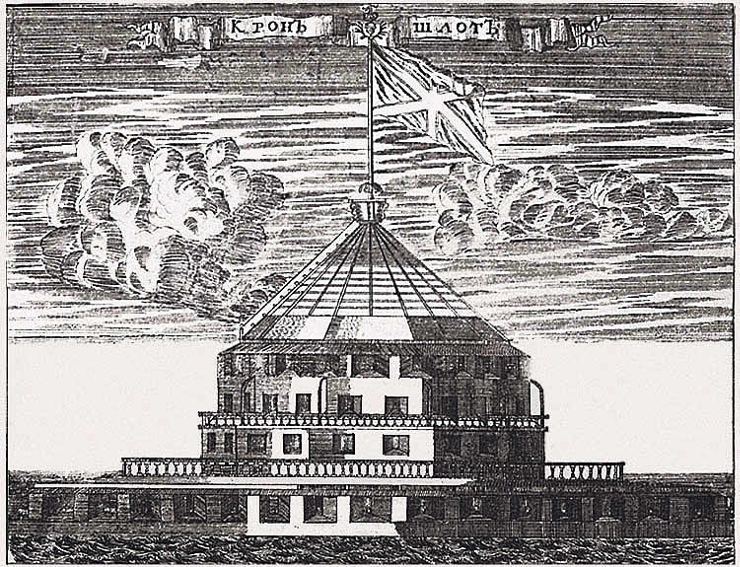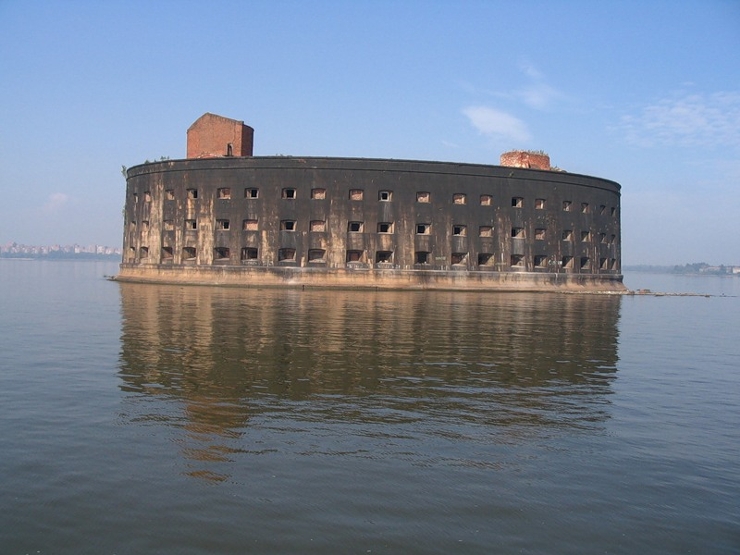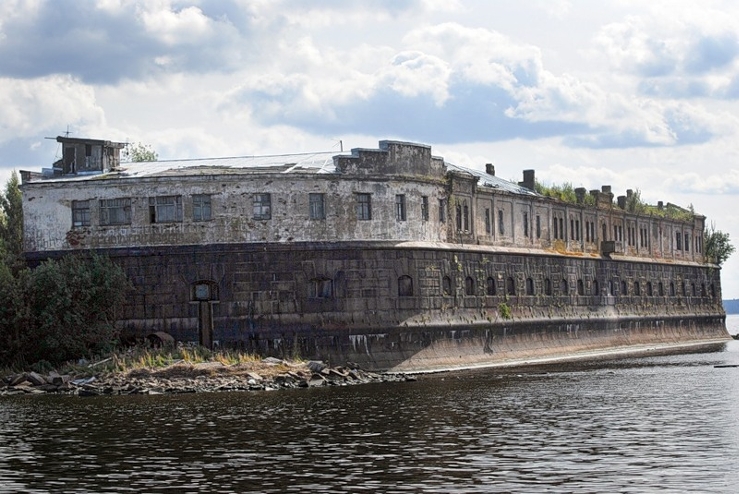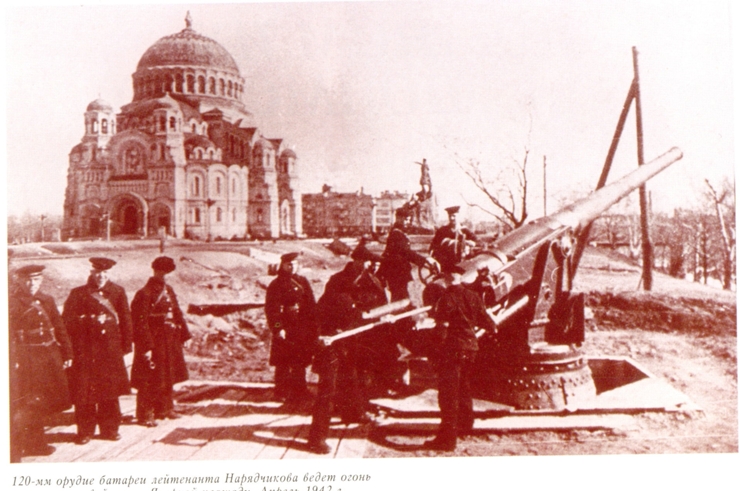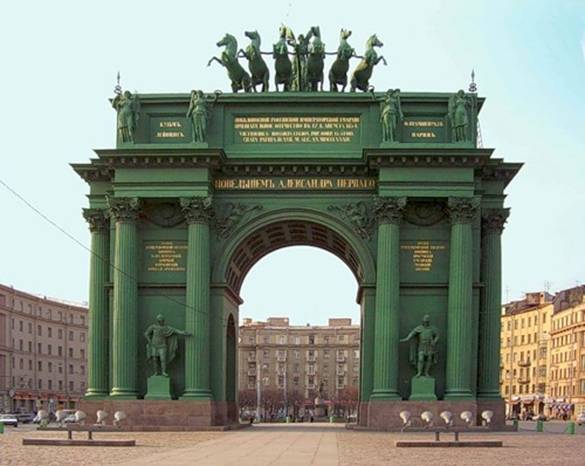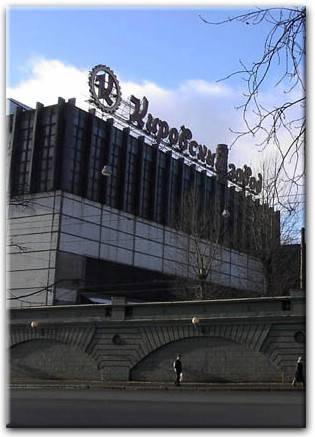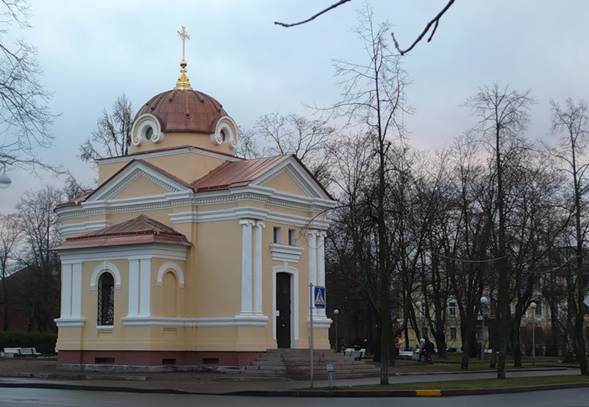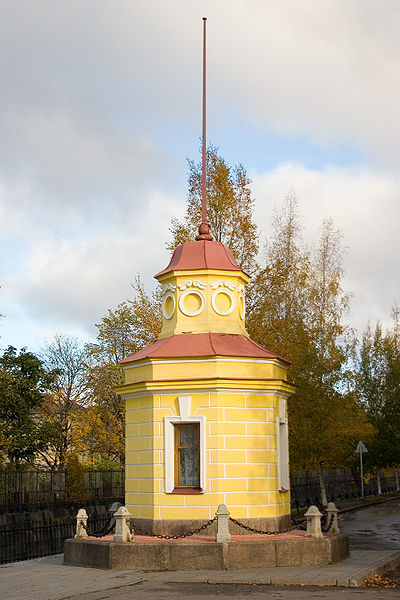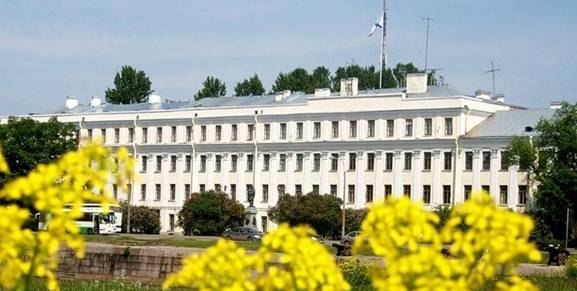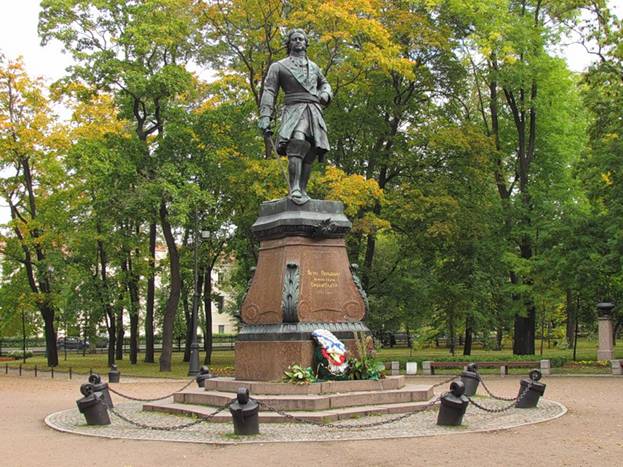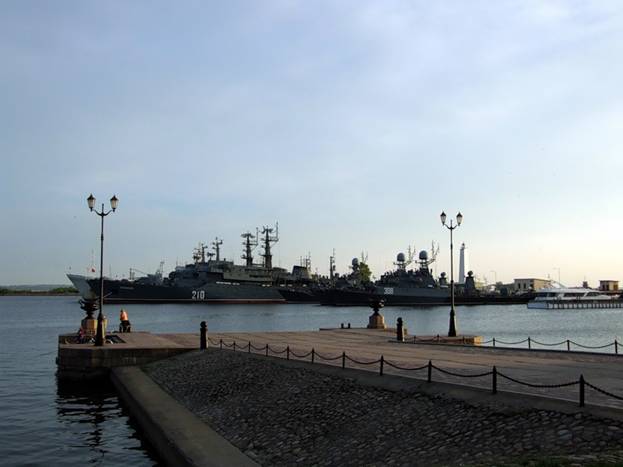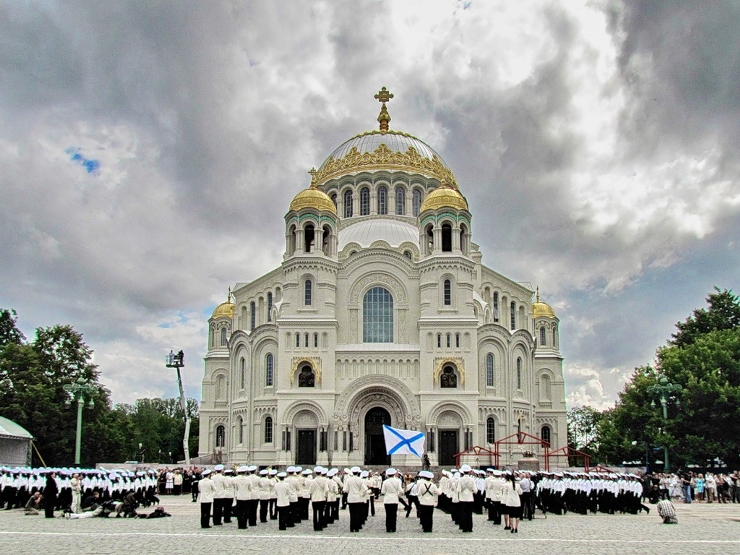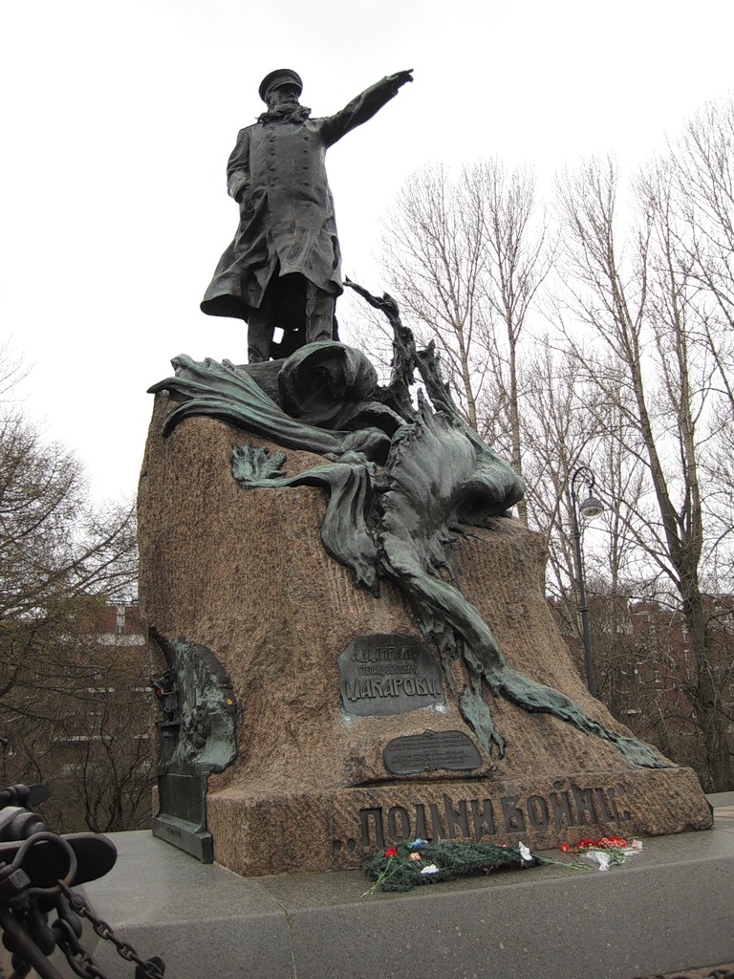 KronstadtKronstadt is situated on the small island of Kotlin in the eastern part of the Gulf of Finland, 40 km west of Saint Petersburg. As the monument of fortification Kronstadt included into the UNESCO’s list the world’s cultural heritage.
History of Kronstadt is indissoluble from Russian Navy. The naval base on the island of Kotlin was built by order of Tsar Peter the Great. Construction of the fortress began in 1703, when Prince Menshikov set up a fort on the sand back of the south coast from a model, made by Peter himself. On 7 (18) May 1704 the first fortifications, including two batteries, were constructed. This day is regarded as the date of Kronstadt founding. It covered the principle approach to the mouth of the Neva river which was the site of a new capital of the Empire, Saint-Petersburg. These fortifications, known as Kronstadt's Forts, were constructed very quickly. The Gulf of Finland is not very deep, so during the winter it completely freezes through. Workers used thousands of frames of oak logs filled with stones. These were carried by horses across the frozen sea, and placed in cuttings made in the ice. Thus, several new small islands were created, and forts were erected on them, closing all access to Saint-Petersburg by the sea. Only two narrow navigable channels remained, and the strongest forts guarded them.
Thousands naval officers and seamen were graduated from Kronstadt educational institutions. The start point of Russian voyages round the world, to the Arctic and Antarctic Regions, Far East was there in Kronstadt harbors. Far voyages gained prestige of Russian Navy, strengthened trade connections with America, Asia and brought great contribution in science due to considerable geographical discoveries (the Antarctic Continent for example). A lot of outstanding captains and navigators served in Kronstadt and conducted scientific researches. They were Spiridov, Ushakov, Senyavin, Makarov, Kruzenshtern, Bellinsgauzen, Nevelskoy. Also fortress and navy made an outstanding contribution in the defense of Leningrad during the Second World War. On 27th of April 2009 Kronstadt was conferred the status of City of Military Glory.
Kronstadt was thoroughly refortified in the 19th century. The old three-decker forts, five in number, which formerly constituted the principal defences of the place, and defied the Anglo-French fleets during the Crimean War, became of secondary importance. From the plans of Eduard Totleben a new fort, Constantine, and four batteries were constructed (1856-1871) to defend the principal approach, and seven batteries to cover the shallower northern channel. All these fortifications were low and thickly armored earthworks, powerfully armed with heavy Krupp guns in turrets. The town itself is surrounded with an enceinte. Kronstadt was the strongest fortress in Europe. During the whole its history no one enemy could not capture it.
In summer 1891, the French fleet was officially and triumphally received in Kronstadt. It was a first step towards the coming Franco-Russian Alliance (Antanta). The sailors of Petrograd and Kronstadt joined the 1917 revolution and killed their officers, and received a reputation as dedicated revolutionaries. But in 1921 a group of sailors and soldiers and their civilian supporters rebelled against the Bolshevik regime in Soviet Kronstadt. During World War II Kronstadt was bombed several times by Nazi Germany's air force. Baltic Fleet based here. Artillery and naval forces of Kronshtadt played a major role in the courageous defense of the besieged city of Leningrad.
In 1995 Kronstadt celebrated 100 year anniversary of the first radio device invention, done by Alexander Popov, a teacher of the Kronstadt officer mine class. He made his device thinking about new kind of communication without wire. And the fast radio communications were among the ships in the Kronstadt roadstead. More than 300 monuments of architecture, history, technology, culture you can see in Kronstadt and almost all of them concern sea. The way to Kronstadt lies on the St. Petersburg floods protection facility complex ("the Dam"). This is a unique 25 km. hydrotechnical construction with the 6 lane highway on its top. The Dam consists of 11 dams, 2 water-locks, 1.8 km long underwater tunnel and 2 km long bridge.
During the tour you can see the St. Vladimir's Cathedral. It is an interesting architectural monument of the late 19th century. The place where was St. Andrew's Cathedral located in the heart the city. St. John of Kronstadt was the dean of this cathedral. He is one of the most revered saints of the Russian Orthodox Church.
However, the main attention should be paid to the southern part of the city. Here you will find the Kronstadt sea gauge. This is a zero level for the Baltic system of altitudes. All depths and altitudes (even the heights of the flight spacecraft) in Russia and some other countries are measured from the level of Kronstadt sea gauge. Yuri Gagarin, the first spaceman in the World, ironically said in 1967 that this is it the Hub of the Universe. Near with the sea gauge the Italian palace is located. This palace is former residence of Prince Menshikov (the closest assistant of Peter the Great). Now it is used for Kronstadt naval base offices.
Park is situated nearby. Its beautiful embankment and the monument to Peter the Great, the founder of Kronstadt, attract many visitors.
Being closed Kronstadt always attracted Russian tourists attention but its changing status opened doors for foreign tourist too. For the 300 years of its development, Kronstadt became a unique monument of fortification, architecture and culture. The name "Kronstadt" ("Kron" - a crown, "Stadt" - a city in German) fully complies to this place. Really, Kronstadt is the crown of St. Petersburg. |
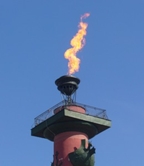 You can book this tour right now! Сайт сделан под разрешение экрана 1280 на 800. Если страницы отображаются некорректно, настройте разрешение экрана: Рабочий стол-правая кнопка мыши-свойства-параметры-разрешение экрана. |
|
|
|
|



